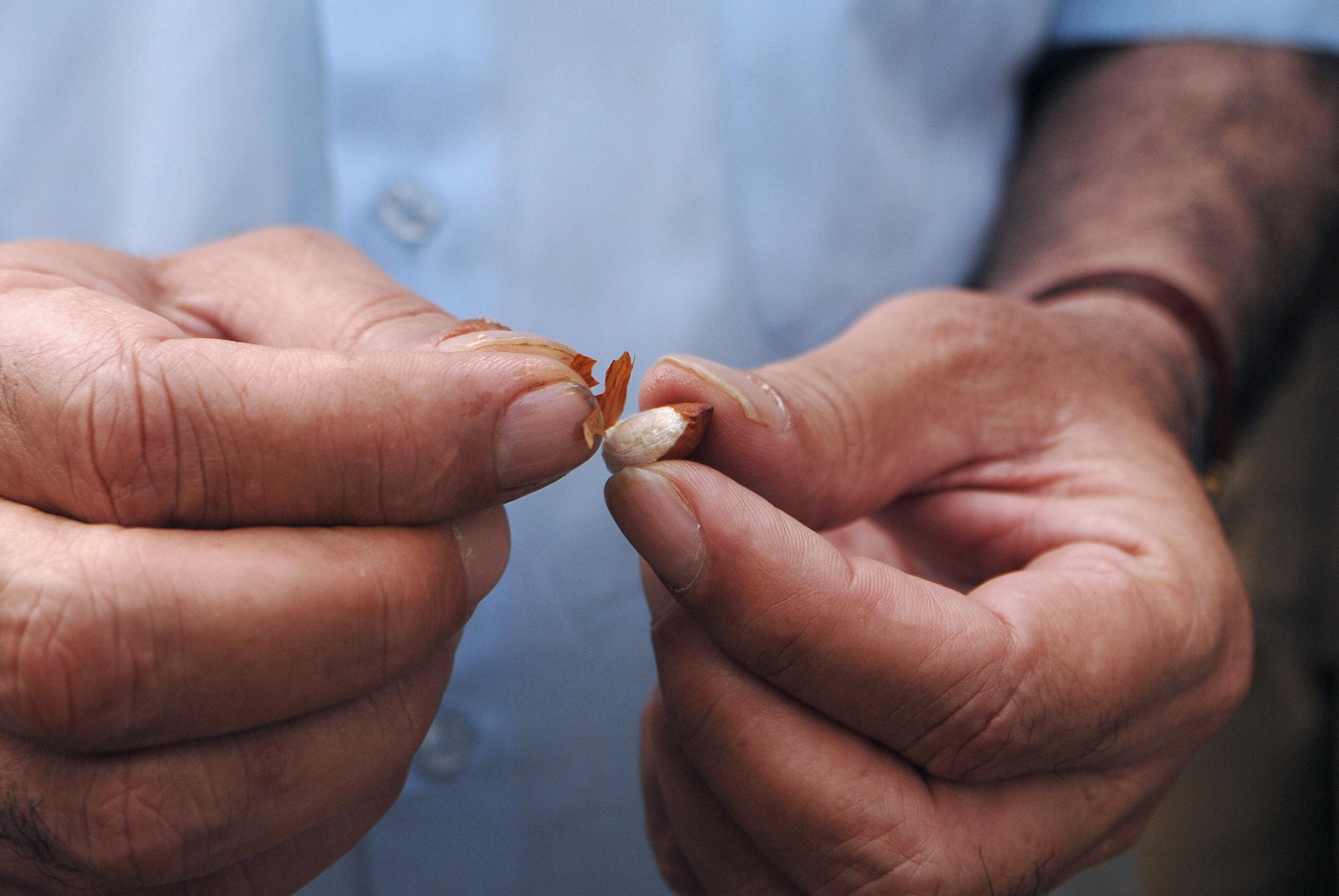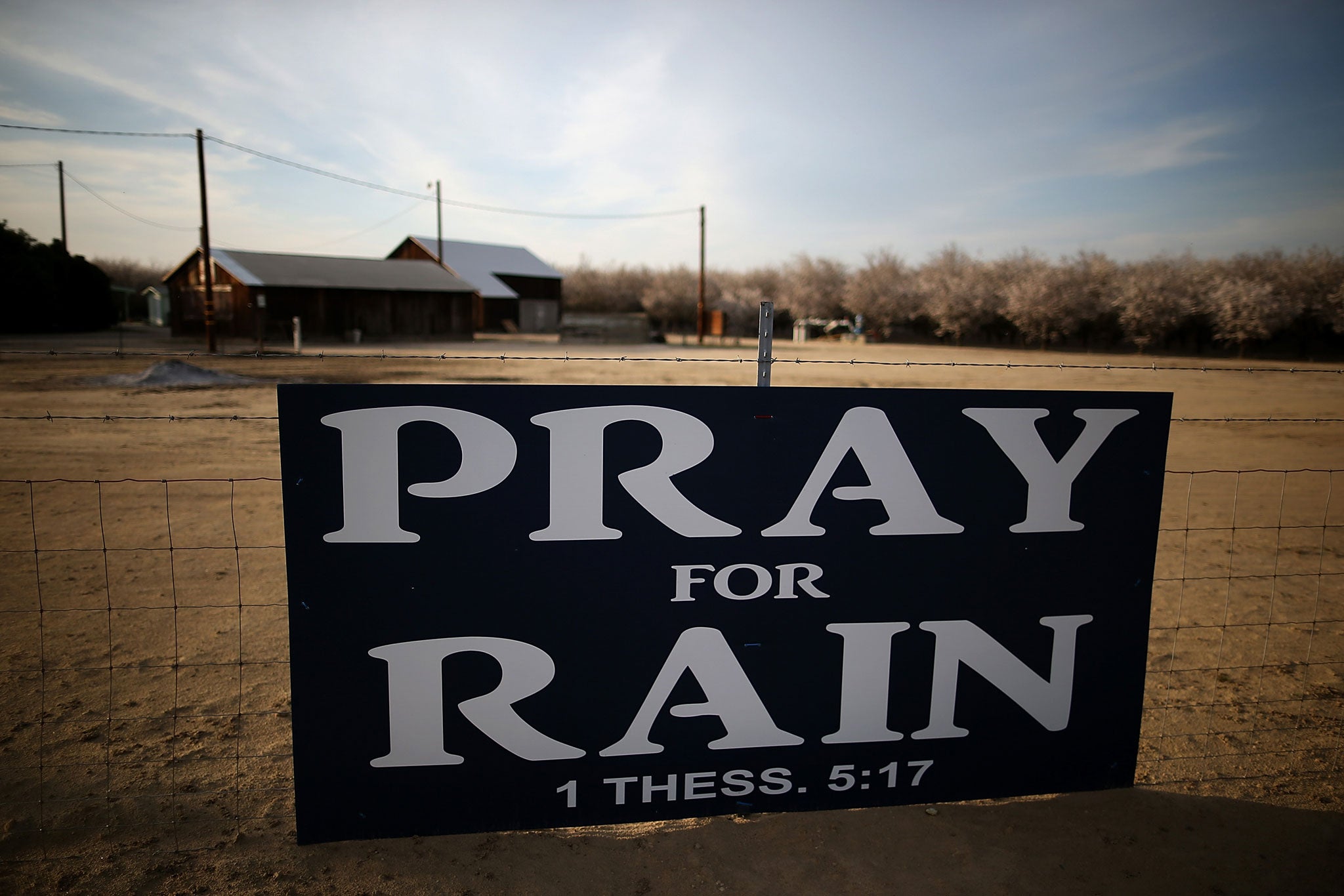Farmers and water conservationists in California do battle over its almonds
Many are blaming the state's persistent drought on its number one food export

Almonds in California have prompted a civil war between farmers and water conservationists over whether they are one of the main causes of the state’s persistent drought.
The California drought has now lasted for three years, prompting Governor Jerry Brown to call for crackdowns on urban water usage of up to 25% more than citizens were asked to conserve in 2013.
The prolonged period of drought has led many to point the blame to the state’s number one food export, almonds.
Environmental groups say the state’s almond farmers are responsible for taking up both land and water, pointing to studies that show it takes one gallon of water to produce just one almond.

This figure can roughly equate to a trillion gallons of water a year across the state.
Tom Stokely, water policy analyst with the California Water Impact Network told NPR: "Almonds use more than all of the outdoor residential landscaping in California and almonds are not the largest water consuming crop either."
On top of that, almond planting rose by around 25% over last year, putting more strain on a state where all water is heavily regulated, it has been reported.
But farmers are saying the almonds are not the real problem.
The drought has meant that water is so regulated that when it comes to agriculture, "junior farmers" are given allowance to use any surface water, even if it runs across their land, according to The Guardian.
Instead, all flowing water is designated as owned by the government's water authority, to be divided up across the whole state.
This means that many have been turning to pumping up the groundwater which, because of its saltier composition, is bad for the crops in the long run.

The Almond Board of California has described the claim that almonds use 10 per cent of the water in Californis as "false".
In its blog the organisation quotes Almond Board CEO Richard Waycott, contributing to an article for the Sacramento Bee, in which he states almonds use about 2.79 million acre-feet of water in one year – which equates to eight per cent of California's agricultural water.
Meanwhile, many farmers claim that they are just trying to maintain a diverse crop of plants and that almonds are not their primary product.
Other arguments say that the almond business currently provides around $11 billion for the state’s economy, which in turn provide jobs and incomes for those working on the farms, according to a report in Vox.
Join our commenting forum
Join thought-provoking conversations, follow other Independent readers and see their replies
Comments
Bookmark popover
Removed from bookmarks